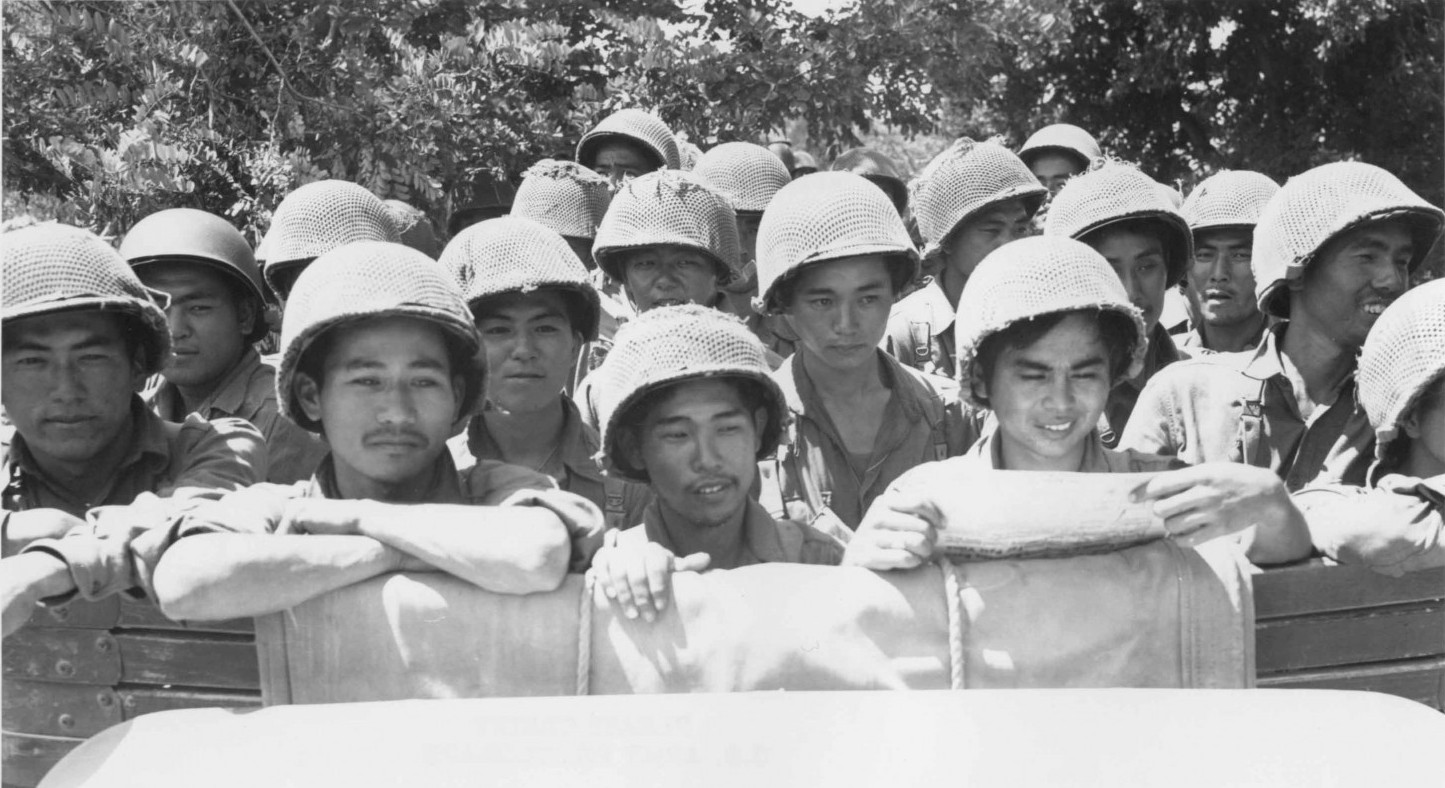Post written by Summer Espinoza, Project Manager at Go For Broke National Education Center
From the Hanashi Oral History Project Archives, recorded July 26, 2006.
Born in Honolulu, Hawaii in 1927, Ralph Shigeto Iwamoto is possibly more widely known for his work as an abstract expressionist artist than his military service. Similarly lesser known in the narrative of the Nisei soldier is the unit in which he served during the Allied Occupation of Japan from 1945 to 1952. Iwamoto was a member of the 441st Counter Intelligence Corps Detachment stationed in the Second Region of the Counter Intelligence Corps, Area 26 or Saitama Prefecture. During his service in Saitama, he was involved with information-gathering and community relation activities. He was often sent to political demonstrations where he mingled with Japanese civilians and tried to blend in wearing his kimono. Lightheartedly, he describes employing a friend to help him translate the speeches at these demonstrations. As a young nineteen year old, he was charged with interpreting highly specialized military language as well; this baffled him. His charge was about taking the pulse of civilian life and activities and building relationships with local officials and authoritative figures.

Iwamoto’s artistic profession and his military experiences aren’t highly investigated in the somewhat linear telling of the Nisei soldier narrative. As someone involved in making these stories known, Iwamoto’s oral history caught my attention when I found a representation of his painting Eastern Twilight. I immediately questioned how his military experience and culture influenced and shaped his work, his identity and the identity of his artistic expression. Did it at all? What did Japan look like thru the eyes of an artist and soldier? Perhaps Iwamoto’s interview doesn’t offer the clearest of answers to these questions; perhaps his use of the octagon as the source shape for his more abstract work, as he suggests, doesn’t have any profound relationship with his personal story. But, to paraphrase what knowledge he offers at the end of his interview: tell your own truth. His truth and his story is more than creating art or being a soldier, it is about staying true “to that thing that is in [him], that’s [what] you have to do.” In sharing his story, in creating his art, perhaps he does in fact widen the truths of the Nisei soldier experience and the artist as well.
(Eastern Twilight was created in 1957 and is owned by the Butler Institute of Art. www.butlerartcollection.com)



